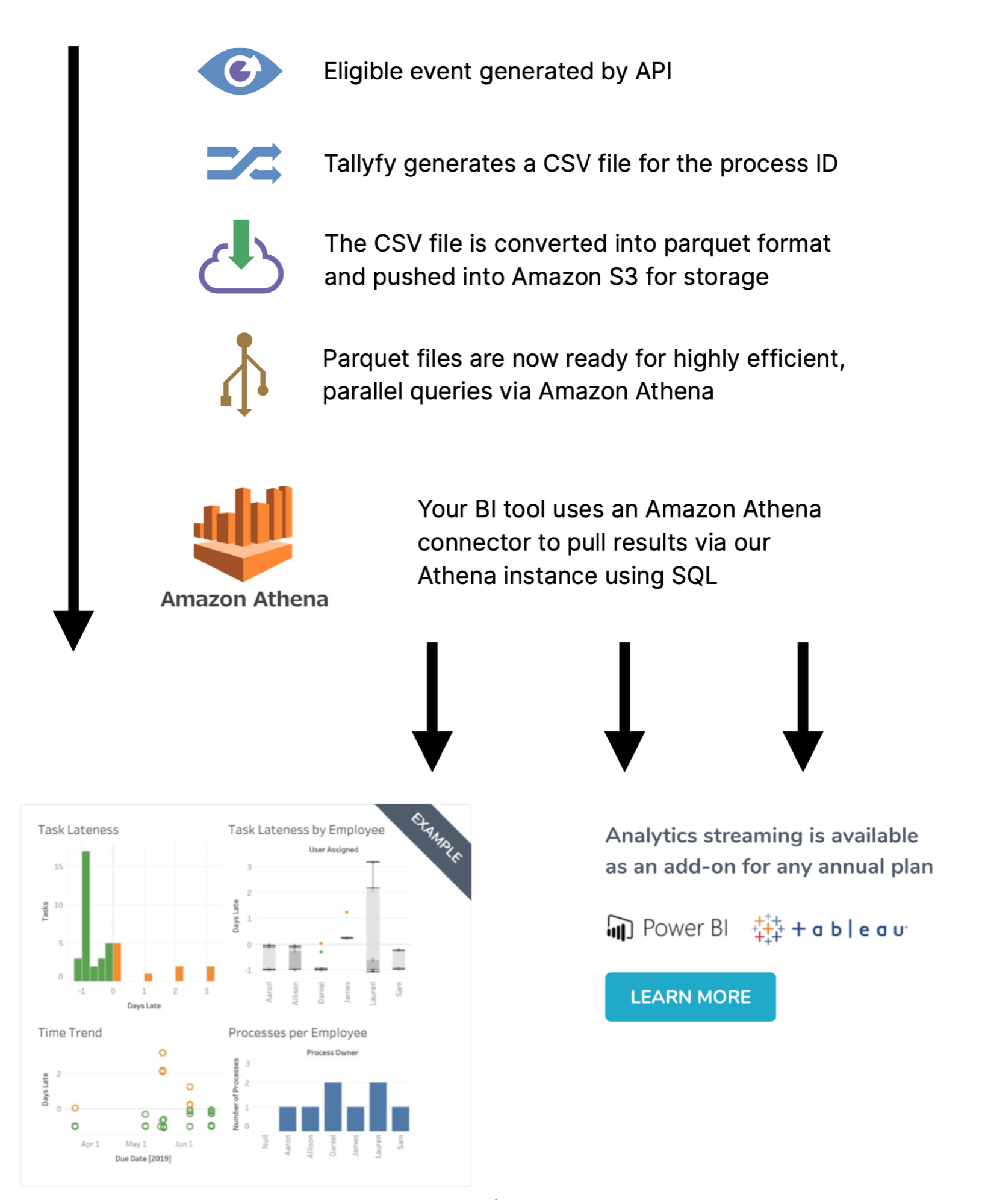Integrations > Tallyfy Analytics
How Tallyfy Analytics works
Tallyfy Analytics transforms your workflow data into a format that business reporting tools can understand. Want to analyze your processes in Power BI or Tableau? Here’s exactly how your data travels from Tallyfy to those tools.
Your data goes through five steps to become analytics-ready:
- Detecting an event: Tallyfy watches for important changes - task completions, status updates, and more.
- Extracting the data: We capture every detail about the process where the event occurred.
- Converting the format: The data gets converted to Apache Parquet1 - a format built for fast analysis.
- Storing securely: Everything lands in your private Amazon S3 storage bucket.
- Providing access: You receive AWS credentials to connect your favorite BI tools.
Tasks get completed. Statuses change. Forms get submitted. When these actions happen in Tallyfy, the system flags them as analytics events worth tracking.
Every event triggers a complete process snapshot. We capture:
- Basic process info (who owns it, status, start and end times)
- Details about each task
- Information submitted in form fields
- Who was assigned to tasks
- Comments added
All this data initially gets saved as a CSV file - just like a spreadsheet you’d open in Excel.
That CSV file won’t cut it for serious analytics. Tallyfy automatically converts it to Apache Parquet format, which:
- Analyzes 10x faster than CSV files
- Takes up 80% less storage space
- Works seamlessly with Power BI, Tableau, and other BI tools
Your Parquet files land in a secure home:
- Amazon S3 handles the storage (yes, the same service Netflix uses)
- You get a private folder - no one else can access it
- AWS security protects everything with encryption at rest
- Files stay available throughout your Tallyfy Analytics subscription
Here’s where the magic happens. Tallyfy gives you AWS IAM credentials - think of them as special keys to your data warehouse. With these credentials, your BI tools can:
- Connect straight to your data through Amazon Athena2
- Run SQL queries to slice and dice your process information
- Use familiar JDBC/ODBC connections (every BI tool supports these)
- Build dashboards that actually answer your questions
Want to see the complete journey? This diagram maps out every step:

Ready to get started? A few things to know:
- Data processing begins the moment Tallyfy Analytics activates on your account - not before
- You’ll receive your AWS IAM credentials right after activation
- Connect your BI tools in under 10 minutes using standard drivers
- Need data stored in a specific region or format? Contact Tallyfy support first
Tableau > Connecting Tableau to analytics data
Was this helpful?
- 2025 Tallyfy, Inc.
- Privacy Policy
- Terms of Use
- Report Issue
- Trademarks